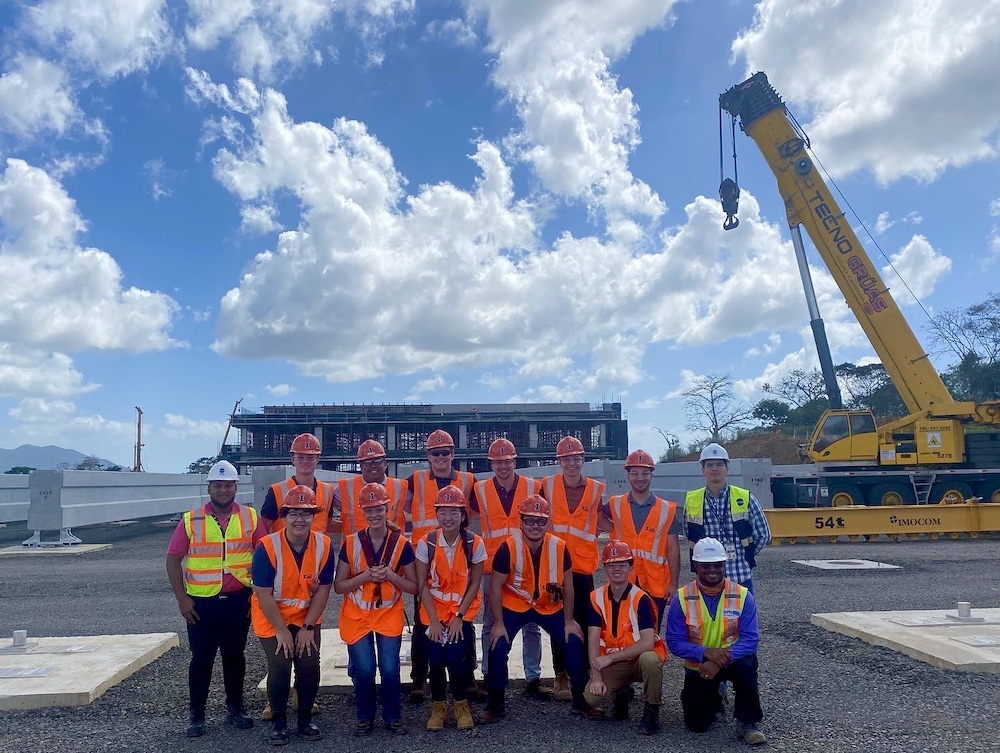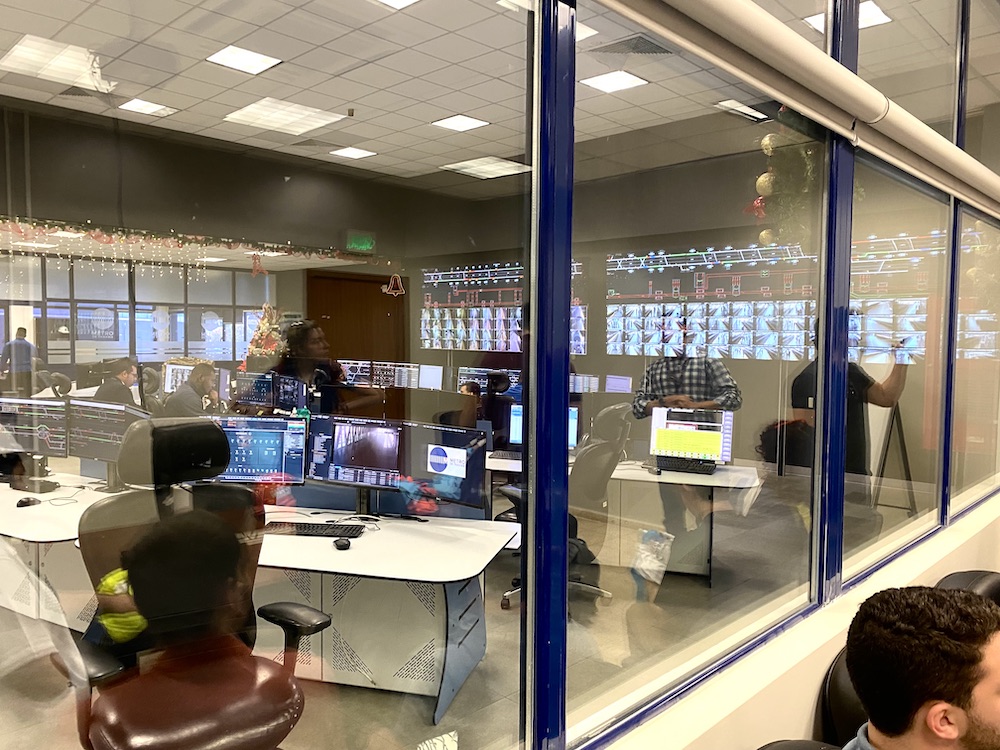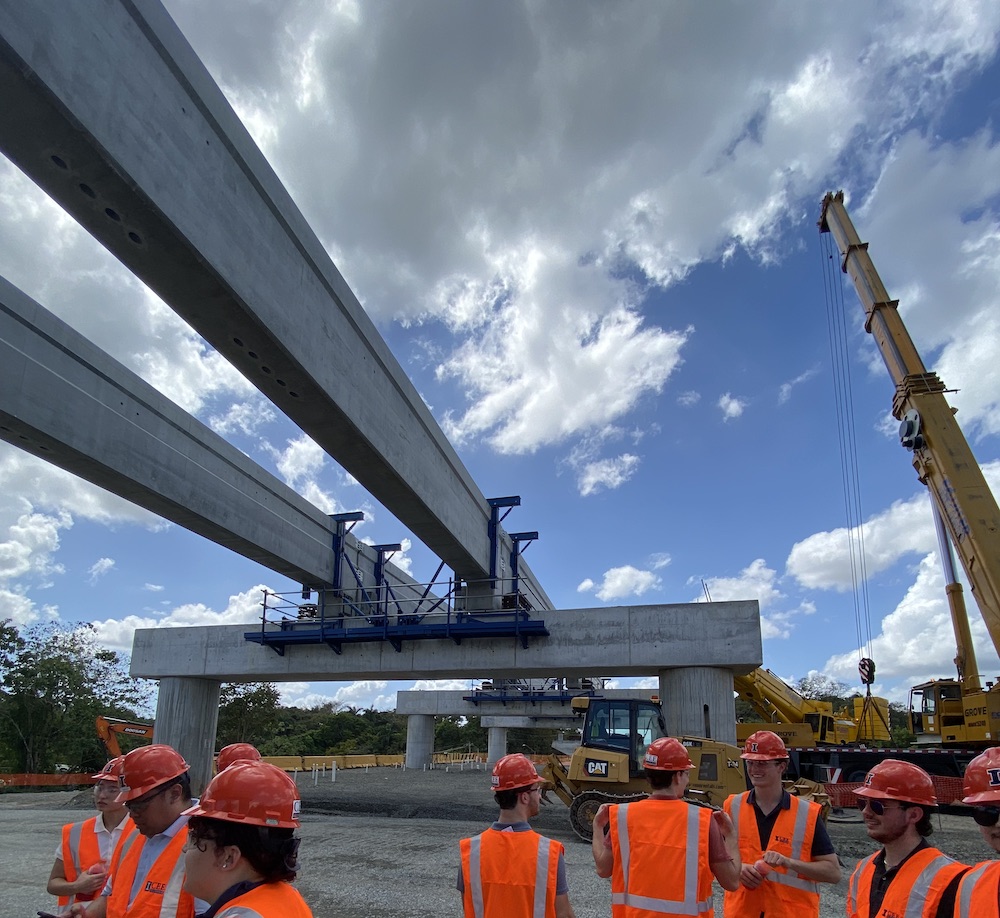
We spent this beautiful sunny morning visiting Panama Metro, the rapidly expanding light rail transit system of Panama City. We first arrived at the administration building for the Metro within view of railway maintenance facilities, where we were met by the Chief Electrical Engineer. He brought us to the Central Control Office (CCO) for the existing Metro system, made up of Line 1 and Line 2. The master plan for Panama Metro has a vision of five major lines linking all major neighborhoods and surrounding provinces of Panama City; Line 1 and 2 are complete, Line 3 is under construction, and Lines 4 and 5 are currently undergoing feasibility studies.
The Central Control Office was the workplace of the chief administrators, where they carefully monitored an enormous wall of screens containing the location and technical details of every railcar and multiple security cameras for every station. The efficiency of the Panama Metro is extremely impressive: with an average daily ridership of 450,000, it only takes 12 administrators to run the system. The average wait time for each train is only 2 minutes, the system is clean and safe, and the cost per ride is 35¢. Panama City’s population is 1.5 million, meaning almost a third of the city uses the metro system daily and they aren’t done yet. Our host informed us that the goal is to achieve ridership between 70-80% of total civilian trips.

After answering our questions (and giving us each a bag of merch including a tape measure, T-shirt, fan, flashlight, tote bag, and snacks), we took a bus to the most active construction site for Line 3, which will eventually unite the western neighborhoods and suburbs with downtown Panama City. Specifically, we were at the end of Line 3 at the track switch zone, railcar maintenance shops, and administrative offices. It was an enormous site with very stringent safety precautions. Line 3 will be the only monorail in the Panama Metro system, a decision made because the international bank financing the $3 billion project is based in Japan; the terms of the deal dictated that a company with ties to the bank was to be awarded the contract. Hyundai (the same company that produces the car) submitted the lowest bid, and given their extensive experience in monorail construction, the monorail design was approved. The monorail presents unique benefits and difficulties in the construction process: the spatial efficiency is better than a typical two-rail system, which requires less land manipulation and makes construction cost more efficient. However, to ensure a smooth ride, the alignment of each subsection of monorail has a strict tolerance of less than 3mm on a 20 meter long stretch of rail. This requires intense surveying, leveling, and attention to detail at every stage of construction.

The expected completion of the rail yard and maintenance shop is in 2024, and the entire Line 3 is expected to open to the public in 2026, a very ambitious goal. Line 3 will be the first Panama Metro Line to tunnel underneath the Panama Canal, a process that, as of January 2022, has not yet begun. To our surprise, however, we were informed that the greatest issue encountered thus far in construction is actually the use of imminent domain to claim land for the rail. Anywhere that the rail crosses populated areas, the government has been claiming the land for Metro use while providing compensation and relocation to the current occupants. These negotiations are still ongoing in many areas, and could result in potentially lengthy schedule delays as the construction team hasn’t been able to analyze the geotechnical or environmental requirements of the sites. These struggles became clear as we made our final stop at the construction site of the last pedestrian station of Line 3, where concrete piers as high as 32 meters high had been constructed on a hillside within 5 meters of backyards on either side.

Overall, we were all very impressed with the advancement of the existing metro, the ambition of the planned system, and the efficiency and safety of the current construction. Panama as a city is evolving very quickly, and I would personally definitely visit again to see the progress!

Blog by Luke Somerville
